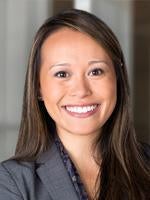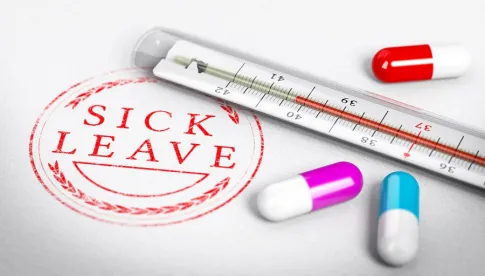On September 11, 2020, the United States Department of Labor (DOL) issued revisions to the Final Rule implementing the Families First Coronavirus Response Act (FFCRA) to clarify workers’ rights and employers’ responsibilities regarding FFCRA paid leave. The revised Final Rule will take effect on September 16, 2020.
The Ruling
The revised Final Rule is the DOL’s response to a ruling entered on August 3, 2020, by the United States District Court for the Southern District of New York (District Court) in a lawsuit filed by the State of New York challenging certain provisions of the Final Rule. As previously reported, the District Court granted partial summary judgment in favor of the State of New York and ruled that four parts of the Final Rule were invalid: (1) the requirement that paid sick leave and expanded family and medical leave are available only if an employee has work from which to take leave (the “work-availability requirement”); (2) the definition of “health care provider” for purposes of the “health care provider or emergency responder” exemption; (3) the requirement that an employer consent in order for an employee to take intermittent leave under the FFCRA; and (4) the requirement that an employee submit documentation to their employer as a pre-condition to leave. Following the District Court’s ruling, employers in New York faced uncertainty as they evaluated whether and how to apply the FFCRA.
The Revised Final Rule
In recognition of the “pressing need for clarity in light of the District Court’s decision,” the DOL issued the revised Final Rule “to reaffirm its regulations in part, revise its regulations in part, and further explain its positions.”
Work-Availability Requirement
The revised Final Rule first reaffirms the work-availability requirement, explaining that an employee may only take paid sick leave or expanded family and medical leave under the FFCRA to the extent that any qualifying reason is a but-for cause of his or her inability to work. Thus, if an employer has no work for the employee to perform, the employee is not entitled to paid sick leave or expanded family and medical leave under the FFCRA.
Employer Approval for Intermittent Leave
Likewise, the revised Final Rule reaffirms that employer approval is needed to take intermittent FFCRA leave in all situations in which intermittent FFCRA leave is permitted. On this point, the DOL explained that the employer-approval condition balances the employee’s need for leave with the employer’s interest in avoiding disruptions to operations. According to the DOL, the employer-approval condition allows both employers and employees flexibility in agreeing upon telework and scheduling arrangements that may reduce or even eliminate an employee’s need for FFCRA leave by reorganizing work time to accommodate the employee’s needs related to COVID-19.
The Definition of “Health Care Provider”
With regard to the definition of “health care provider” for purposes of the “health care provider or emergency responder” exemption, the revised Final Rule adopts an amended regulatory definition including: (1) the FMLA definition of “health care provider” (any employee who is a health care provider under 29 CFR 825.102 and 825.125), and (2) any other employee who is capable of providing health care services, meaning he or she is employed to provide diagnostic services, preventive services, treatment services, or other services that are integrated and necessary to the provision of patient care and, if not provided, would adversely impact patient care. While the DOL’s expanded definition of “health care provider” is broader in scope than the classic FMLA definition of “health care provider,” it is limited to nurses, nurse assistants, medical technicians, and any other persons who directly provide services. As such, the revised Final Rule has an immediate impact on healthcare employers as of September 16, 2020.
Timing of FFCRA Documentation
Finally, the revised Final Rule clarifies that an employee is not required to submit documentation concerning the need for leave prior to taking paid sick leave or expanded family and medical leave, but rather should submit documentation as soon as practicable. The DOL notes that in most cases, the requirement to submit documentation will be when the employee provides notice of the employee’s need for leave. However, when the need for expanded family and medical leave is foreseeable, such as when an employee receives advance notice of a school closure, the employee is likewise required to provide notice as soon as practicable, which would occur before taking leave.
Updated FAQs
In addition to issuing the revised Final Rule on September 11, 2020, the DOL updated its FAQs to reflect its new guidance concerning the application of the FFCRA.
Next Steps for Employers
It is yet to be determined whether the revised Final Rule will satisfy the concerns addressed in the District Court’s ruling, or whether the DOL will face additional challenges by the State of New York or other jurisdictions. Regardless, employers should apply the FFCRA consistent with the revised Final Rule and should consult counsel with any questions. Importantly, health care employers who may have exempted some or all of their employees from the FFCRA based on the DOL’s prior definition of “health care provider” for purposes of the “health care provider or emergency responder” exemption should consult with counsel to determine the new scope of exempted employees and the proper path forward for their organization.




 />i
/>i

